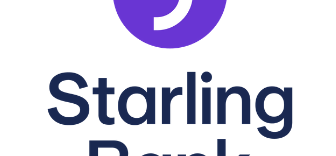Where in the world is the best place to invest money now?

The value of 'value investing'
So what is value? A value investor buys shares in companies that he believes are undervalued (that’s why it’s called value investing) by the market on the assumption that when reality catches up with the company fundamentals the share price will be revalued (so rise) and they will make a profit.
To find value involves scrutinising company balance sheets and accounts looking for the value that others can’t see, the earning potential that your peers are overlooking. However, determining ‘value’ is subjective and can be hit and miss. The investment landscape is littered with value investors who misread the ‘value’ signs and got it wrong. Sometimes things are cheap for a reason and get cheaper as a result. Even value investing gurus like Warren Buffet get it wrong.
Yet, the biggest drawback of value investing is finding simple reliable information with which to determine ‘value’.
The best measure of 'value'
There are a wide range of measures that can be used to help determine a company’s value yet perhaps the most reliable measure, and the one I favour, is something called the Cyclically adjusted Shiller P/E (or CAPE) for short.
It is a measure of value created by Nobel prize winning economist Robert Shiller and received much attention when it effectively predicted the US stock market crash of the late 1990s.
In a nutshell the CAPE measure looks at the price of a share compared to its earnings ability over the last 10 years. The bigger the number the more expensive the share is and the lower the CAPE the cheaper it is.
You can even use the CAPE for entire stock markets to get an overall measure of how expensive the market is, much like Shiller did before the stock bubble burst in 2000. If a market is hugely expensive versus history then it could be a sign of a pending market correction. Similarly if a market is cheap it could be a sign of better days ahead. It all hinges on the market reverting back and forth across an historic median. The CAPE is sometimes used to predict future returns for stock markets based on history, although that has to be taken with a pinch of salt.
However it’s not just about how big or small the CAPE figure is but how it compares to the market’s (or company’s) long term median. So you can see although it is a relatively simple measure, getting hold of the information is almost impossible.
Yet you must bear in mind CAPE is not a crystal ball. Currently the US stock market has a CAPE of 27.74, well above the long term average of 15.9. This makes US shares eye-wateringly expensive and implies an expected annual return of less than zero over the next few years, or in other words to lose investors money.
However, this has been the case for a number of years and the expected correction hasn’t happened because the Federal Reserve has been keeping markets afloat by printing money and keeping interest rates low. Therein lies the problem with value measures.
My 80-20 Investor algorithm was developed based around momentum, yet ultimately encapsulates the positives of value investing. A value investor may have identified a fund previously, yet will be waiting for the market to catch on. When it finally does the share price will go up, climbing up the share performance tables. At this point 80-20 Investor subscribers will invest their money and ride the wave upwards, as a result of the unique 80-20 Investor algorithm which highlights the funds to buy now. You can find out more about 80-20 Investor here as well as see how it has helped armchair investors outperform the market and investment professionals. (I am also giving FREE access to short series of emails which explains how to be a successful DIY investor, the result of analysing thousands of fund managers' performance).
While 80-20 Investors have been making profits in the US stock market over the last year value investors have sat on the sidelines. A correction will occur but we have no way of telling exactly when. But that is why I use CAPE to help guide my decisions….
What are the cheapest stock markets in the world now?
Combining the 80-20 Investor algorithm with a measure such as CAPE can be incredibly powerful and helpful. For example currently China, Japan and Asian equities (some of the best value stock markets) feature strongly in the 80-20 Investor Best of the Best funds (portfolio) and its performance has benefited as a result.
CAPE can be a useful tool in helping inform your asset allocation decisions and where to invest money. It is no real surprise that I reduced my exposure to US tech companies in my £50,000 investment which 80-20 Investor subscribers can follow live.
Where can I find CAPE data?
One of the problems with CAPE is that it is difficult for a private investor to obtain the data. It is also very complicated trying to work out the data yourself.
Within 80-20 investor I have access to CAPE data which I have used to create a 'value table' for worldwide stock markets. You can sign up to 80-20 Investor here for a FREE trial to access this data.
Image: chrisroll




